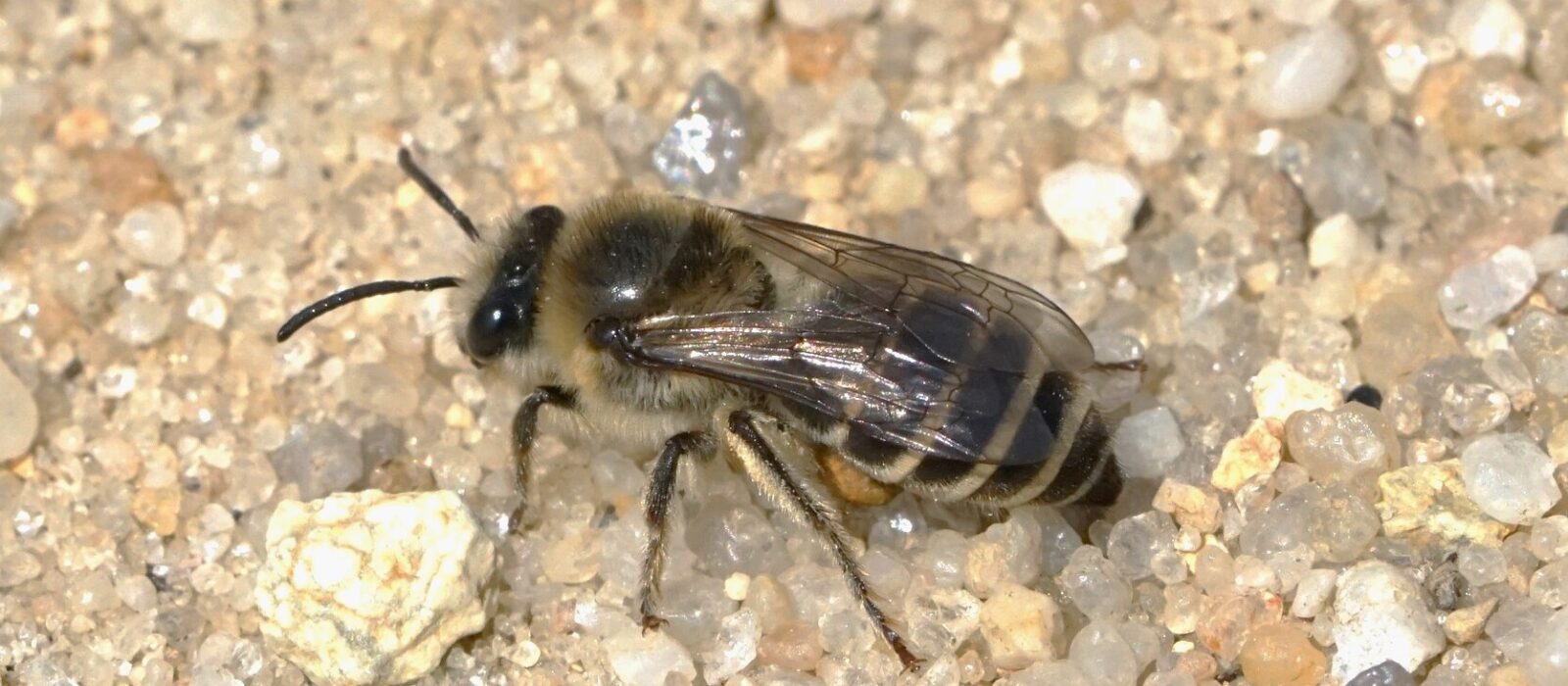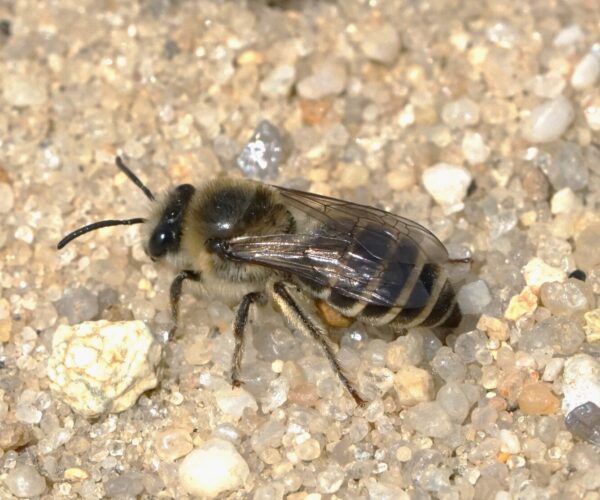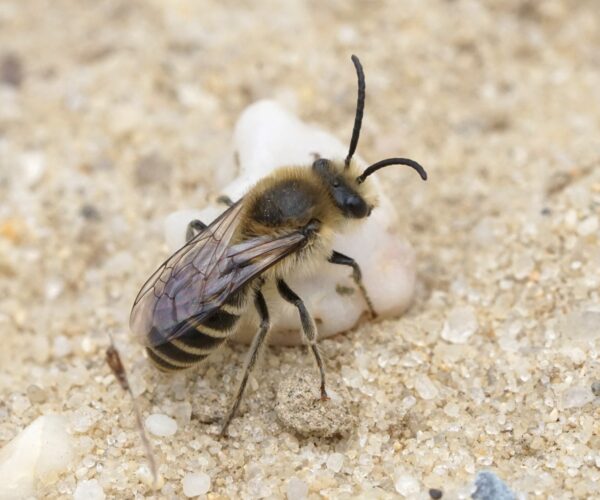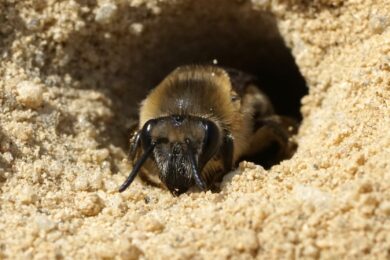
Colletes validus
While its range extends into the Southeast and parts of the Midwest, the blueberry cellophane bee, Colletes validus, is primarily an insect of the coastal Northeast, from Maryland to southern Maine. Wherever it occurs, it requires sandy soil for building its nest burrows, and it associates strongly with blueberry (Vaccinium spp.), its favorite forage plant. It’s unsurprising, then, that Martha’s Vineyard, with its extensive, sandy glacial outwash plain and its abundance of blueberries, hosts a significant population of this interesting insect.
While we’ve recorded this species visiting a blueberry bush outside the BiodiversityWorks office in Vineyard Haven, it’s in the barrens habitat of Manuel F. Correllus State Forest that Colletes validus is most plentiful. In particular, the dirt roads along the fire lanes in the northeastern portion of Correllus support a large number of these bees. On May 4, 2024, I observed scores of validus nests and adults of both sexes in this area. (Click here to see the Vineyard C. validus records currently in iNaturalist.)
The period of adult activity for this bee varies with latitude, but in general it is a spring species and its flight period is synchronized quite closely with the bloom period of blueberries. At least some years, the species is surely active here in late April and early June; but so far, all the Martha’s Vineyard records we’re aware of fall within the month of May.
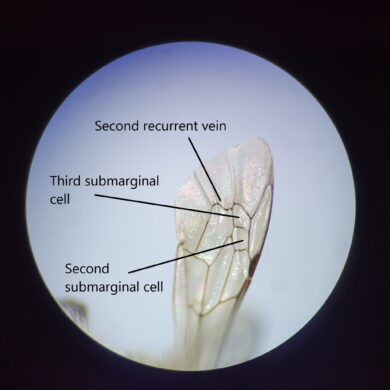
Like most of our Colletes species, C. validus is a medium-sized bee (about the size of honeybee). Both sexes are quite hairy, and the segments of their abdomens feature prominent white hair bands. Two features of the wing help identify the genus Colletes in general: the second recurrent vein, straight in most other bees, is obviously curved or even “S”-shaped in Colletes. And while the third submarginal cell is much larger than the second one in most bees, these two cells are close to the same size in Colletes. The blueberry cellophane bee is distinguished from our other spring Colletes species by its almost ludicrously elongated face: the clypeus (a plate that covers the lower face) is long, as is the malar space (the area between the bottom of the eye and hinge of the mandible), giving the face a distinctive shape. Presumably this lengthened face is an adaptation for feeding on the deep, bell-shaped flowers of blueberry.
Females of Colletes validus dig distinctive burrows in the ground; the hole itself is about the diameter of a pencil, and the mouth of the burrow is usually surrounded by a prominent cone of excavated sand. Females can often be spotted sitting just inside the mouth of their burrows, guarding their nests against predators or nest parasites. Within the burrow are multiple brood cells, containing eggs and provisioned with pollen by the female. While each female digs her own burrow, C. validus, like most other Colletes species, tends to be a gregarious nester: dozens of nests may be found in the same area, while nearby areas of seemingly suitable habitat have no nests at all.
Colletes validus is a good example of what we mean when we talk about the “distinctive biodiversity of Martha’s Vineyard.” While it’s not often observed, it doesn’t appear to be a truly rare bee or a species of major conservation concern. But it is locally abundant here on the Vineyard; our lean, sandy soils are perfect for the nests of this species, and those soils plus a long history of frequent disturbance have fostered a huge population of blueberries. Colletes validus, a characteristic species of one of the Vineyard’s most characteristic habitats, finds exactly what it needs here.
Matt Pelikan is the director of the Martha’s Vineyard Atlas of Life project at BiodiversityWorks. Bees rank high among his many natural history interests.
